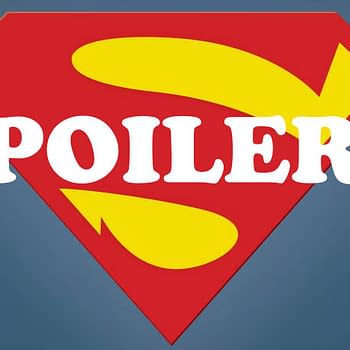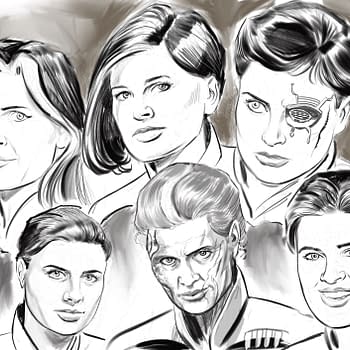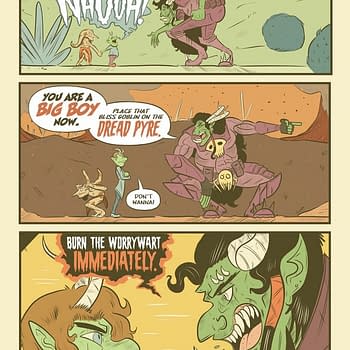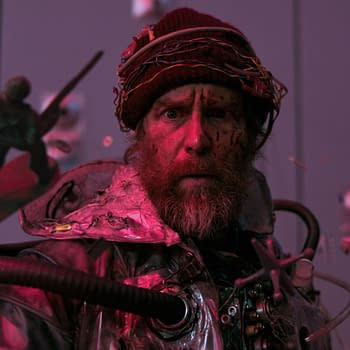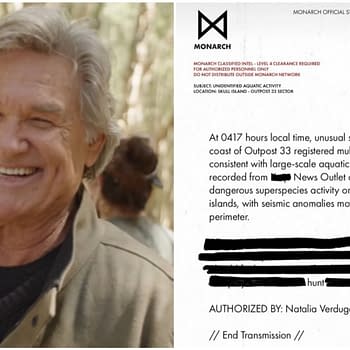Posted in: Movies | Tagged: colleen doran, Comics, entertainment, film, gail simone, kelly sue deconnick, wendy pini, women
'There Have Always Been Women In Comics' – The Testament Of She Makes Comics
By Tony Wolf
"There have always been women in comics. There have been women in comics for decades."
– Kelly Sue DeConnick
Women in comics are finally getting the spotlight. But do you know the rich history of female comics creators? The new documentary She Makes Comics by director Marisa Stotter and Respect Films/ Sequart brings us a fascinating, in-depth look into the unsung heroes of the comic book world. She Makes Comics, now available on DVD and via download, is the result of a successfully funded 2014 Kickstarter campaign.
In an interview with Bleeding Cool's Nikolai Fomich, Stotter pointed out:
The trouble with a documentary that tries to span a long period of time is avoiding the "classroom movie syndrome," where you're throwing a lot of facts at the viewer and little of it has any emotional resonance. So we tried to find the middle ground between demonstrating the breadth of women's involvement in comics and highlighting particular women's stories that we felt were representative of the major milestones of comics history.
During the 1950s and 60s, the entirety of comic book readership in the USA was split 55% female, 45% male. The comics industry (those with brains in their heads, at least) has been seeking ever since to reclaim those female readers. While many comic fans are familiar with names like Martin Goodman, Stan Lee, and even Marvel office administrator Flo Steinberg, it's a pretty safe bet that even hardcore fans may not have heard of the first African-American comic artist / cartoonist, Jackie Ormes, who also was one of a tiny handful of professional female illustrators. The documentary also notes that at the time (Ormes worked as a cartoonist from 1937-1956), it was extremely unusual for a woman to even have a job, other than that of a housewife or secretary. (As context, Mad Men viewers will recall the tremendous resistance the character of Peggy Olson encounters to the notion of her having a job.)

The doc, Ms. Stotter's directorial debut (she interned at Respect Films after college), keeps things moving at a good pace while giving us extensive coverage of each person, topic, and time period. We learn that Trina Robbins co-founded It Ain't Me, Babe in 1973 – the first women's liberation feminist magazine in the country. Local community outrage at the extremely frank, often sexual content led to threats of legal action and arrest legal action from local and federal authorizes. Thanks to intervention from the ACLU, the case against the women was dropped. But the foundation for a blunt and uncompromising female voice in comics had been set. Illustrator Joyce Farmer: "We made people uncomfortable. After a while, I didn't mind making people uncomfortable; I ended up thinking that was part of my job." In many ways, the female underground comics movement was a response to the objectification of women that some perceived in the "unchecked male ego / id" of creators like R. Crumb, who often displayed their sexual fantasies on the comic book page.


Paul Levitz also notably comments: "If you made a list today of the top dozen important comic book writers of the last 10-15 years, Karen probably developed 90% of them."
Attention is paid to the 'Women In Refrigerators' discussion initiated by fan-favorite Gail Simone, and Kelly Sue DeConnick (who has a number of fantastic, passionate interviews here, including extended conversations in the DVD extras) emphasizes that she is consistently "wanting comics to stand up a little taller." Another notable quote from DeConnick: "I can teach any man you meet about power fantasies. That is not an inherently masculine trait."I particularly enjoyed the inclusion of several female comics retailers and their perspective on the industry and how to attract (and keep) more female readers. Interviews with Amy Dallen, who works at House of Secrets in Burbank, California, as well as the team of Portlyn and partner Autumn Glading, owners of Brave New World comics in Newhall, California , are engaging and informative. We get some excellent insight into their philosophy and approach to the industry, and to promoting the business they love.


She Makes Comics is available on DVD and via download at www.shemakescomics.com .
Follow director Marisa Stotter at @marisastotter & @SheMakesComics , producer/ editor Patrick Meaney at @patrickmeaney and producer / DP Jordan Rennert at @respectjordan.
Tony Wolf (@tonywolfness) is an actor, voice-over guy, sometime illustrator and rabid pop culture fan in New York City. His autobio webcomic series 'Greenpoint of View' has been featured in Gothamist and New York Magazine's 'Bedford + Bowery.' He can be found lurking about at www.tonywolfactor.com and was the co-host ofwww.theactionroom.com.








